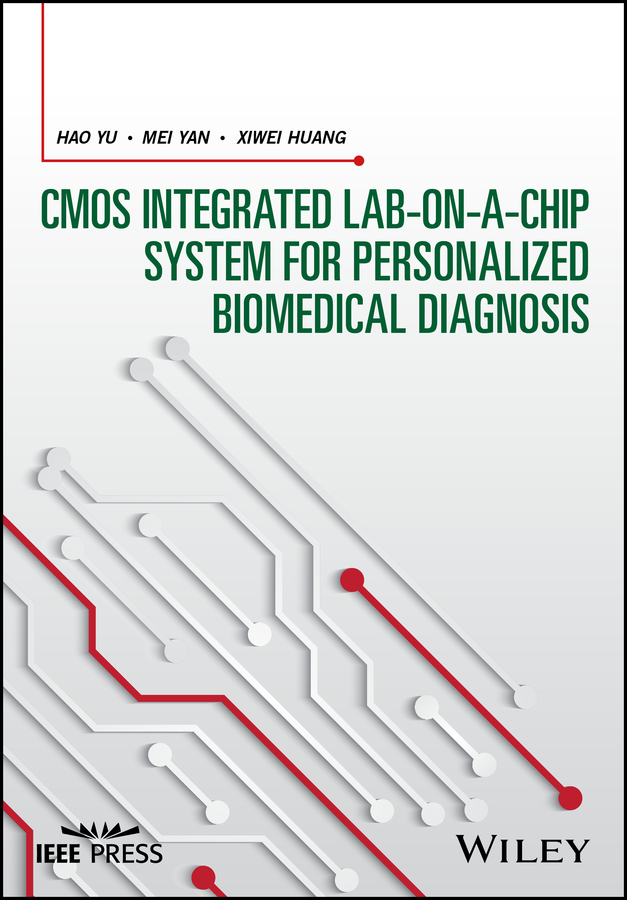


This edition first published 2018
© 2018 John Wiley & Sons Singapore Pte. Ltd.
All rights reserved. No part of this publication may be reproduced, stored in a retrieval system, or transmitted, in any form or by any means, electronic, mechanical, photocopying, recording or otherwise, except as permitted by law. Advice on how to obtain permission to reuse material from this title is available at http://www.wiley.com/go/permissions.
The right of Hao Yu, Mei Yan, Xiwei Huang to be identified as the authors of this work has been asserted in accordance with law.
Registered Office(s)
John Wiley & Sons, Inc., 111 River Street, Hoboken, NJ 07030, USA
John Wiley & Sons Singapore Pte. Ltd, 1 Fusionopolis Walk, #07‐01 Solaris South Tower, Singapore 138628
Editorial Office
1 Fusionopolis Walk, #07‐01 Solaris South Tower, Singapore 138628
For details of our global editorial offices, customer services, and more information about Wiley products visit us at www.wiley.com.
Wiley also publishes its books in a variety of electronic formats and by print‐on‐demand. Some content that appears in standard print versions of this book may not be available in other formats.
Limit of Liability/Disclaimer of Warranty
While the publisher and authors have used their best efforts in preparing this work, they make no representations or warranties with respect to the accuracy or completeness of the contents of this work and specifically disclaim all warranties, including without limitation any implied warranties of merchantability or fitness for a particular purpose. No warranty may be created or extended by sales representatives, written sales materials or promotional statements for this work. The fact that an organization, website, or product is referred to in this work as a citation and/or potential source of further information does not mean that the publisher and authors endorse the information or services the organization, website, or product may provide or recommendations it may make. This work is sold with the understanding that the publisher is not engaged in rendering professional services. The advice and strategies contained herein may not be suitable for your situation. You should consult with a specialist where appropriate. Further, readers should be aware that websites listed in this work may have changed or disappeared between when this work was written and when it is read. Neither the publisher nor authors shall be liable for any loss of profit or any other commercial damages, including but not limited to special, incidental, consequential, or other damages.
Library of Congress Cataloging‐in‐Publication Data
Names: Yu, Hao, 1976– author.
Title: CMOS integrated lab‐on‐a‐chip system for personalized biomedical diagnosis / Hao Yu, Southern University of Science and Technology, China, Mei Yan, Consultant, China, Xiwei Huang, Hangzhou Dianzi University, China.
Description: Hoboken, NJ : Wiley, 2018. | Series: Wiley ‐ IEEE | Includes bibliographical references and index. |
Identifiers: LCCN 2017049248 (print) | LCCN 2017050886 (ebook) | ISBN 9781119218357 (pdf) | ISBN 9781119218340 (epub) | ISBN 9781119218326 (hardback)
Subjects: LCSH: Medical instruments and apparatus–Research. | Metal oxide semiconductors, Complementary.
Classification: LCC RA856.4 (ebook) | LCC RA856.4 .J53 2018 (print) | DDC 610.28/4–dc23
LC record available at https://lccn.loc.gov/2017049248
Cover Design: Wiley
Cover Image: © e‐crow/Gettyimages
Considering the current aging society, the future personalized diagnosis requires portable biomedical devices with miniaturization of bio‐instruments. The recent development of lab‐on‐a‐chip (LOC) technology has provided a promising integration platform of microfluidic channels, microelectromechanical systems (MEMS), and multi‐modal sensors, which allow non‐invasive and near‐field sensing functions. The standard complimentary metal‐oxide semiconductor (CMOS) process allows a low‐cost system‐on‐chip (SOC) solution to integrate sensors from multimodal domains, which has raised many new design challenges, such as how to develop multimodal sensors for system integration; how to integrate with MEMS and microfluidic channels from the device technology perspective; as well as data fusing and smart processing of multiple domains from system application perspective.
This book will report on the recent progress in CMOS integrated LOC system for personalized diagnosis. The book is organized into 12 chapters. After a background discussion on personalized diagnosis, LOC, and CMOS‐compatible multimodal sensors in the first Chapter of introduction, Chapter 2 to Chapter 7 discuss CMOS sensor design and several CMOS sensor technologies, namely CMOS electronic impedance sensor, CMOS Terahertz sensor, CMUT ultrasound sensor, CMOS 3D‐integrated MEMS sensor, and CMOS optical sensor for microfluidic contact imaging. Then two dual‐mode sensor are illustrated in Chapters 8 and 9, such as dual‐mode chemical/optical image sensor and dual‐mode energy‐harvesting image sensing. Finally, based on the aforementioned sensors, two important applications of DNA sequencing and cell counting are elaborated on. Chapter 10 focuses on DNA sequencing application, Chapter 11 covers cell imaging and counting application, and Chapter 12 briefly summarizes the book.
The authors would like to thank their colleagues Y. Shang, S. Manoj, X. Liu, Hantao Huang, Zichuan Liu, and Hang Xu. The authors also acknowledge with gratitude discussions with Professors Krishnendu Chakrabarty, Tsung‐yi Ho, Zhihua Wang, Yong Lian, Guoxing Wang, Mohamad Sawan, Pantelis Georgiou, Dongping Wu, Chenjun Huang, Paul Franzon, Xin Li, and Kenneth Shepard. Their support was invaluable to us during the writing of this book. Finally, the authors acknowledge TSMC’s contribution to sensor chips fabrication in the MPW tapeout shuttle.